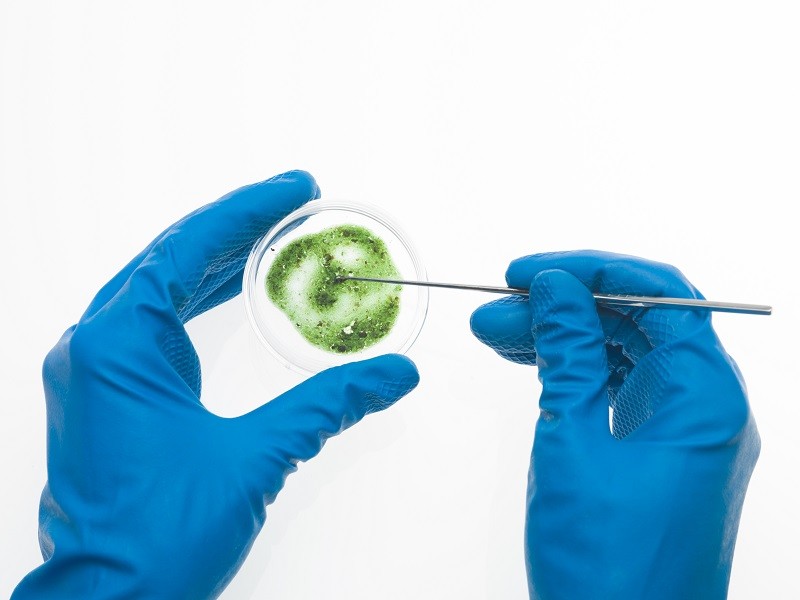Mold vs. Mildew: How to Tell the Difference & When to Call a Professional

Strong 8k brings an ultra-HD IPTV experience to your living room and your pocket.
Mold and mildew are common household problems that nobody wants to deal with. They both look gross, smell musty, and can cause damage to your home. But are they the same thing? Not quite. While they share some similarities, they have key differences that can help you figure out what you are dealing with. Knowing how to spot the difference can save you time and money and even protect your health.
Let’s learn what mold and mildew are, how to tell them apart, what causes them, and most importantly, when it is time to call in the professionals.
What is Mildew?
Mildew is a fungus that lives on moist surfaces. It is usually white, gray, or yellow and looks like a powdery or fluffy patch. You will often find it in bathrooms, on windowsills, and even on fabric that has been left damp for too long. Mildew is easy to clean, but if left untreated, it can spread and create an unpleasant smell.
Mildew likes warm, humid places, so it is common in areas with poor ventilation. If you take a hot shower and do not use a fan or open a window, mildew may start forming on the tiles or shower curtain. It is annoying, but it is usually not a serious problem.
What is Mold?
Mold is another type of fungus, but it is more aggressive than mildew. It comes in many colors, including black, green, blue, or even orange. Mold is often found on walls, ceilings, carpets, and even furniture. It loves damp areas, but it does not just stay on the surface like mildew. Mold can get deep into materials, making it harder to remove. However, if you are concerned about persistent mildew or suspect mold, searching for 'mold testing and removal near me Santa Barbara' can help you find professionals to assess and address the issue.
How to Tell the Difference Between Mold and Mildew
If you are not sure whether you have mold or mildew, here is a simple way to tell:
Color: Mildew is usually white, gray, or yellow, while mold can be black, green, blue, or even orange.
Texture: Mildew is powdery or fluffy, while mold is fuzzy, slimy, or even rough.
Growth Pattern: Mildew stays on the surface and spreads in flat patches. Mold grows deeper into materials and spreads unevenly.
Smell: Both have a musty odor, but mold smells stronger and more unpleasant.
Where It Grows: Mildew is common on damp surfaces like bathroom tiles and fabric. Mold is found in walls, ceilings, carpets, and wood.
If you see a powdery white or gray patch that wipes away easily, it is probably mildew. It is most likely mold if you see dark spots that keep spreading and are hard to clean.
What Causes Mold and Mildew?
Both mold and mildew grow in damp, warm environments. Here are some common causes:
Leaks: Water leaks from pipes, roofs, or windows can create the perfect breeding ground for mold and mildew.
Humidity: High humidity levels, especially in basements and bathrooms, encourage fungal growth.
Poor Ventilation: If air cannot circulate properly, moisture gets trapped, leading to mold and mildew.
Flooding: If water is not cleaned up quickly after a flood, mold can start growing within 24 to 48 hours.
How to Prevent Mold and Mildew
The best way to deal with mold and mildew is to prevent them in the first place. Here are some simple steps:
Control Humidity: Use a dehumidifier in damp areas and keep humidity levels below 50%.
Improve Ventilation: Open windows, use fans, and make sure air circulates in your home.
Fix Leaks: Check for leaks in pipes, roofs, and walls, and fix them as soon as possible.
Clean Regularly: Wipe down damp areas like bathroom tiles, windowsills, and kitchen counters.
Use Mold-Resistant Products: If you are remodeling, use mold-resistant drywall, paint, and insulation.
Dry Wet Areas Quickly: Do not let water sit for too long. If something gets wet, dry it out as soon as possible.
When to Call a Professional
While mildew is usually easy to clean with household products, mold is a different story. Here are signs you need professional help:
Large Areas of Mold: If mold covers an area larger than 10 square feet, it is time to call in the experts.
Mold Keeps Coming Back: If you clean mold but it keeps returning, there may be a hidden moisture problem.
Health Issues: If you or someone in your home experiences allergies, breathing problems, or other health symptoms, mold could be the cause.
Hidden Mold: If you smell mold but cannot see it, it might be growing behind walls, under floors, or in air ducts.
Structural Damage: Mold can weaken walls, ceilings, and floors. If you notice cracks, warping, or crumbling materials, it could be due to mold.
Professionals have the right equipment to safely remove mold and prevent it from coming back. They can also check for hidden moisture problems and fix them before they get worse.
How Professionals Remove Mold
Mold removal is more than just scrubbing with soap and water. Here is what professionals do:
Inspection: They check the extent of the mold problem and find the source of moisture.
Containment: They seal off the affected area to prevent mold spores from spreading.
Filtration: They use special air filters to remove mold spores from the air.
Removal: They clean or remove contaminated materials like drywall, carpet, or insulation.
Prevention: They repair leaks, improve ventilation, and use treatments to prevent mold from returning.
Final Thoughts
Mold and mildew may seem similar, but they have key differences. Mildew is a surface problem that is easy to clean, while mold can be a serious issue that requires professional help. Knowing the signs of mold and mildew can help you take action before the problem gets worse.
If you have a small patch of mildew, a good cleaning should do the trick. But if you suspect mold, especially if it keeps coming back, do not wait too long. Mold can spread fast and cause health problems, so calling a professional is often the best solution.
By keeping your home dry, well-ventilated, and clean, you can keep mold and mildew at bay. A little prevention goes a long way in keeping your home safe and healthy!
Note: IndiBlogHub features both user-submitted and editorial content. We do not verify third-party contributions. Read our Disclaimer and Privacy Policyfor details.


